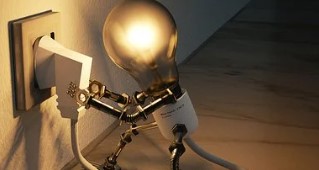Absurd design errors
Built in 1947, the facility was the centre of Britain’s nuclear programme.
This is where plutonium and tritium intended for atomic bombs came from.
Two large buildings with massive chimneys, which the employees colloquially called “Piles”, were used for this. Each contained a 2,000-ton graphite core with holes through which employees pushed through the fuel rods.
Inside this core, the fuel rods reacted to produce small amounts of plutonium and huge amounts of heat. The hot rods then fell into the water body on the other side of the core to cool down.
But due to a design error, it often happened that instead of the prepared water, they fell next to the floor.
And now we come to the absurdities that we would currently look at as a revelation: Instead of correcting this flaw, the designers themselves went to sweep the burned-out hot rods into the water.
Until they did, radioactive substances were released into the space behind the reactor and, thanks to ventilation, flew through the chimney out into the air.
Filtration (which, by the way, the originally responsible people wanted to omit due to higher construction costs and requirements for quick completion of the project, and the project’s chief engineer Jonathan Cockcroft had to literally dig it out, for which he was ridiculed) was not one hundred percent effective, as shown by radiation measurements in the surrounding villages, the results of which, however, were kept secret from the inhabitants by the authorities.
Security was simply not the number one priority, unlike the production of weapons of mass destruction… So it’s no surprise that disaster had to happen to change something.
Course of the accident
On October 7, 1957, employees in reactor one noticed more heat than usual. It was the eighth time such a thing had happened, but this time the usual measures did not help.
In one channel of the reactor, 2053, the temperature refused to drop. Two days later, on October 10, it became clear that the device was in trouble.
Employees tried to cool the heat through ventilation, but sensors on the chimneys began to report radiation and smoke emanated. The reactor operator then decided to look inside with their own eyes and was horrified.
The four fuel channels were red-hot.
Only then did they realize what was really going on: Some of the fuel rods had to open and are burning directly in the reactor, and the fans are making the problem worse many times.
The workers tried to push the damaged rods out of the reactor, but the pieces of scaffolding they used melted in their hands.
Carbon dioxide cooling proved impossible, and even very risky water cooling did not work out, and the reactor temperature had since long since exceeded 1,000 degrees Celsius.
And so the employees made a last-ditch attempt to get the fire under control:
They completely shut down the ventilation system, which had been running at full speed until then, merrily spewing radioactive materials out of the chimney.
And it helped – in the following days, the temperature slowly dropped and finally managed to manage the impending risk.









